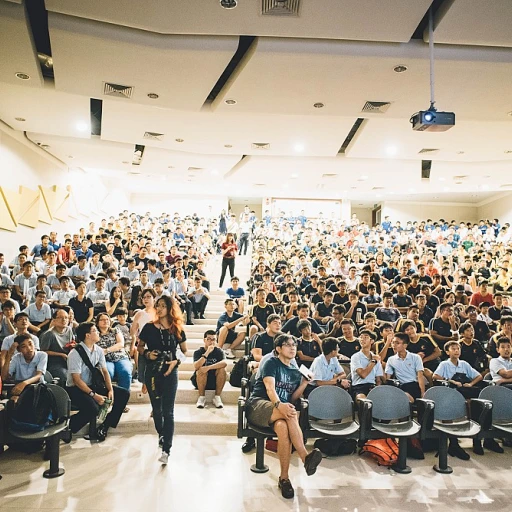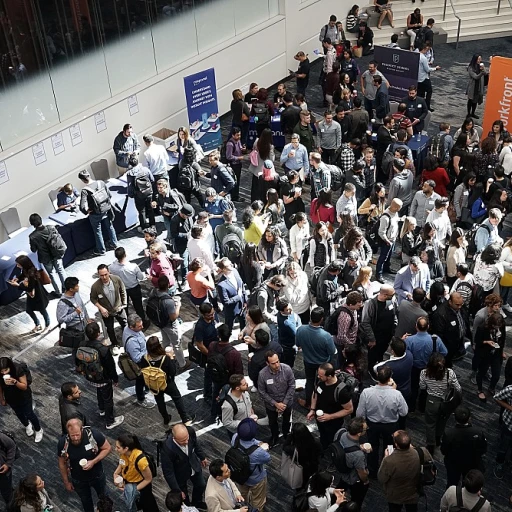
The Evolving Role of the Chief Human Resources Officer
From Traditional to Transformational: The Role of CHROs
The role of the Chief Human Resources Officer (CHRO) is undergoing significant transformation in today's dynamic workplace environment. Traditionally viewed as an administrative function, human resources is evolving into a strategic domain crucial for fostering a smarter workplace and enhancing the overall work environment. CHROs are now at the forefront of organizational change, leveraging real-time data and smart technologies to optimize workplace experience. Their function is not limited to space management, but extends to creating a work environment that is both responsive and adaptive, particularly in hybrid workplaces. This transition demands a deeper understanding of management psychology and employee needs, making resources management more about people than processes. Moreover, the modern CHRO is pivotal in orchestrating change management initiatives that help organizations navigate the complexities of a diverse workforce. By integrating a data-driven approach, CHROs can enhance key features like desk booking systems and video conferencing solutions that contribute to a more efficient workplace. This is essential not only for boosting employee experience but also for mitigating the environmental impact of traditional office setups. In today's landscape, the expectations from CHROs extend beyond conventional HR metrics. They are tasked with addressing real challenges such as the privacy policy of employee data, while promoting a culture that encourages collaboration and innovation. It is through this lens that they strive to create a work environment that reflects the evolving socio-economic realities. To delve further into how CHROs are championing this transformation, you can explore navigating the digital shift in human resources for insights and strategic approaches that align with modern demands.Integrating Technology for Enhanced HR Functions
Leveraging Innovative Tools for the Modern Workplace
In today’s fast-paced business landscape, technology plays a critical role in reshaping how workplaces function. The shift towards a smarter workplace isn't merely about swapping out old tools for new ones; it's about fundamentally rethinking how work is managed and experienced. For Human Resource functions to remain effective, integrating state-of-the-art technology becomes essential. Employing tools like desk booking systems and video conferencing applications not only improves space management but also enhances real-time collaboration. These technologies are key features in promoting a seamless workplace environment, especially within a hybrid workplace model where flexibility is crucial. The goal is to create a cohesive and efficient workspace that adapts to the needs of its users. With data-driven insights, management can better understand the nuances of the workplace experience and improve both employee satisfaction and productivity. For instance, using analytics from meeting rooms can help optimize facility resources or improve the environmental impact by reducing wasted space. Smart work environments require more than just cutting-edge products; they need to offer a holistic improvement of the employee experience. This includes streamlining operations and reducing friction, thus helping employees feel more engaged and empowered. Navigating this digital transformation requires a thorough understanding of the balance between privacy and transparency. Crafting policies that respect employee privacy while leveraging the benefits of digital tools is paramount, and resources such as comprehensive digital marketing expertise can help HR leaders in this regard. By thoughtfully integrating these resources, organizations can not only enhance operational efficiency but also cultivate a smarter, more intelligent work environment that meets the demands of September and beyond.Cultivating a Culture of Continuous Learning
Fostering an Environment of Continuous Improvement
Creating a smarter workplace requires a commitment to fostering a culture where continuous learning is not just encouraged but embedded in the organization's fabric. In today's rapidly evolving work environments, the Chief Human Resources Officer (CHRO) plays a vital role in integrating initiatives that help employees thrive, grow, and adapt in real-time. The modern office environment faces unique challenges, especially within hybrid workplaces where seamless communication and collaboration are crucial. Incorporating data-driven tools and key features like desk booking systems and video conferencing solutions facilitates effective communication and supports a continuum of learning and development. By leveraging smart technologies, the CHRO can utilize workplace analytics to identify skill gaps and curate personalized learning experiences for employees. This approach ensures that staff receive the necessary resources to enhance their workplace experience. Additionally, organizations can cultivate a learning culture by implementing platforms that encourage the sharing of knowledge and expertise among colleagues. By prioritizing open dialogue and collaboration, employees engage in ongoing educational opportunities that enable them to adapt to changing workspaces and responsibilities. Furthermore, emphasis should be placed on developing a learning management system (LMS) that considers the diverse needs of the organization's workforce. This system should allow for flexible learning paths and access to a wide array of educational products that accommodate varying learning styles and preferences, thereby enhancing overall employee experience. Incorporating a privacy policy that respects individual learning data is crucial. This ensures that the organization maximizes the potential of new learning tools while safeguarding employee privacy and trust. By acknowledging the importance of learning and development, organizations can enhance their workplace environments significantly. The inclusion of products and tools designed to foster growth helps employees remain agile, skilled, and prepared for future challenges. For CHROs seeking to optimize their roles further, understanding and employing software solutions that ensure workplace equity can amplify their efforts towards creating a fairer and more engaged workforce. Explore more about enhancing fairness and equity here.Promoting Diversity and Inclusion
Creating an Inclusive and Collaborative Space
Promoting diversity and inclusion within the workplace is pivotal in ensuring a dynamic and cohesive work environment. By cultivating an inclusive space, organizations can tap into a variety of perspectives, leading to improved decision-making and innovation. This approach not only enhances the workplace experience but also supports better employee experiences across diverse groups. To facilitate this, management can develop key features within the office environment that address the unique needs of different employees. Implementing tools such as desk booking and video conferencing can accommodate hybrid workplace models, making it easier for remote and in-office employees to share workspaces effectively. This inclusivity allows greater flexibility, promoting a more motivated and engaged workforce. Moreover, organizations should utilize real-time data-driven strategies to identify and address any disparities within the workplace. By doing so, they can ensure fair treatment and equal opportunities for all employees, ultimately driving a smarter workplace culture rooted in fairness and respect. The insights derived from psychology suggest that diversity not only influences the emotional aspect of employees but also contributes to tangible outcomes. In today’s rapidly changing work environments, it is crucial to prioritize diversity and inclusion, ensuring that every individual feels valued and supported. In summary, fostering an inclusive office environment by using modern management techniques and space management practices not only helps organizations in achieving their goals but also positively impacts overall employee well-being.Enhancing Employee Engagement and Well-being
Boosting Employee Engagement in the Modern Workplace
In today's dynamic work environments, enhancing employee engagement is crucial for creating a smarter workplace. A well-engaged workforce not only boosts productivity but also contributes to a positive workplace experience. Organizations are increasingly focusing on strategies that foster a sense of belonging and purpose among employees.
One key feature of a successful employee engagement strategy is the integration of real-time feedback mechanisms. This allows management to address concerns promptly and make data-driven decisions that improve the work environment. By leveraging technology, such as desk booking systems and video conferencing tools, companies can create a more flexible and responsive hybrid workplace.
Moreover, understanding the psychology of employees is essential. Providing opportunities for professional growth and recognizing achievements can significantly enhance the employee experience. Sharing success stories and encouraging open communication can help build a supportive office culture.
Creating a Supportive Work Environment
To promote engagement, organizations must also focus on the physical and emotional well-being of their employees. This includes optimizing space management to ensure that meeting rooms and workspaces are conducive to collaboration and innovation. Additionally, offering resources for mental health support and promoting work-life balance are critical components of a supportive work environment.
Environmental impact is another consideration. Companies are increasingly aware of their responsibility to create sustainable workplaces. By implementing eco-friendly practices and reducing waste, organizations can demonstrate their commitment to both employee well-being and environmental stewardship.
In conclusion, enhancing employee engagement requires a multifaceted approach that combines technology, psychology, and a commitment to creating a positive workplace culture. By prioritizing these elements, organizations can foster a more engaged and productive workforce.












